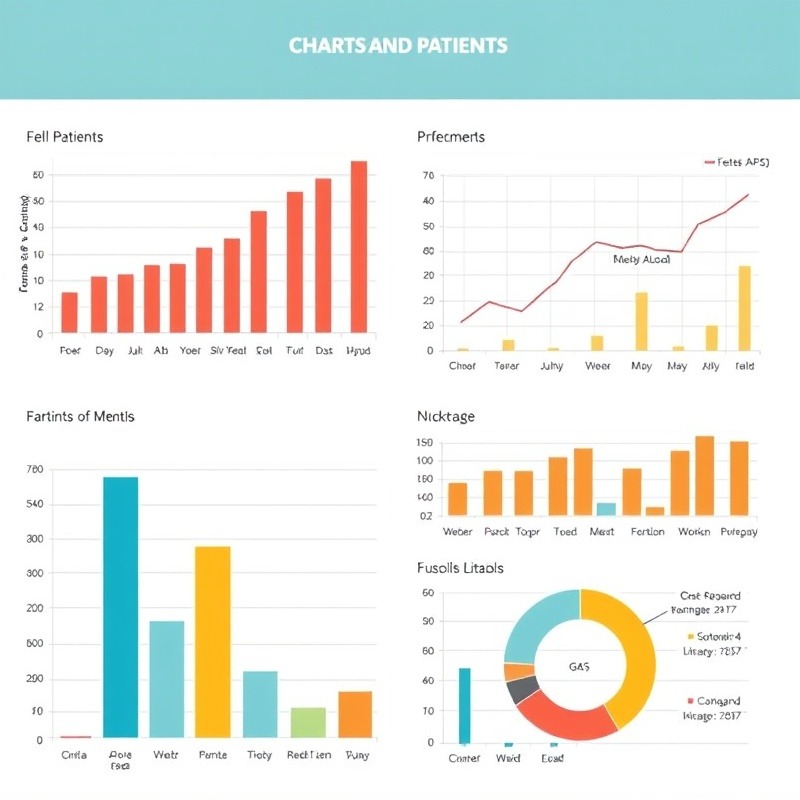Retargeting ads are a powerful tool in digital marketing, especially for medical practitioners aiming to keep their practice top-of-mind for potential patients. By leveraging data and analytics, you can refine your retargeting ads to be more effective and targeted. This guide will help you understand the types of data available, the benefits of using data, how to collect and analyze it, and the tools and technologies that can help you. Let's dive in.

Types of Data and Their Sources
Understanding the types of data you can use is the first step in refining your retargeting ads. Here are the key types of data and their sources:
1. Demographic Data
This includes information about the age, gender, location, and income level of your audience. You can gather demographic data from social media platforms like Facebook, Instagram, and LinkedIn, as well as from Google Analytics.
2. Behavioral Data
Behavioral data tracks the actions users take on your website, such as pages visited, time spent on each page, and the sequence of actions. Google Analytics and other web analytics tools can provide this data.
3. Psychographic Data
This data delves into the interests, values, and lifestyles of your audience. Surveys, social media interactions, and third-party data providers can help you collect psychographic data.
4. Transactional Data
Transactional data includes purchase history, frequency of visits, and previous interactions with your services. This data can be collected from your practice management system or CRM (Customer Relationship Management) software.
5. Engagement Data
Engagement data measures how users interact with your content, such as likes, shares, comments, and click-through rates. Social media platforms and email marketing tools can provide engagement data.

Benefits of Harnessing Data
Using data to refine your retargeting ads offers numerous benefits:
1. Data allows you to target specific segments of your audience with tailored ads, increasing the relevance and effectiveness of your campaigns.
2. By targeting the right people with the right message, you can maximize the return on investment (ROI) of your advertising spend.
3. Personalized ads based on data insights can create a more engaging and relevant experience for potential patients.
4. Data-driven insights enable you to make informed decisions about your marketing strategies and allocate resources more effectively.

Steps to Collect and Analyze Data
Collecting and analyzing data is crucial for refining your retargeting ads. Here are the steps to follow:
1. Identify Your Goals
Determine what you want to achieve with your retargeting ads. Are you aiming to increase patient appointments, promote a new service, or re-engage past patients?
2. Choose Your Data Sources
Select the sources from which you will gather data, such as Google Analytics, social media platforms, CRM systems, and surveys.
3. Collect the Data
Use tools and technologies to gather the data you need. Ensure that you have consent from your patients and comply with data privacy regulations.
4. Analyze the Data
Analyze the data to identify patterns, trends, and insights. Look for segments of your audience that show interest in specific services or have high engagement rates.
5. Apply the Insights
Use the insights from your data analysis to refine your retargeting ads. Create tailored ad content that resonates with different segments of your audience.

Tools and Technologies for Data Analytics
Several tools and technologies can help you collect, analyze, and leverage data for your retargeting ads:
Google Analytics
Google Analytics is a powerful tool for tracking website traffic, user behavior, and conversion rates. It provides detailed insights into your audience's actions and preferences.
CRM Software
CRM software, such as Salesforce or HubSpot, helps you manage patient information, track interactions, and analyze engagement data.
Platforms like Facebook Insights, Instagram Analytics, and LinkedIn Analytics provide data on user engagement, demographics, and behavior.
Email Marketing Tools
Email marketing tools like Mailchimp and Constant Contact offer analytics on open rates, click-through rates, and user engagement.
Data Visualization Tools
Tools like Tableau, Power BI, and Google Data Studio help you visualize data insights in an easy-to-understand format.

Data Visualization Techniques
Visualizing your data can make it easier to interpret and act upon. Here are some effective data visualization techniques:
1. Charts and Graphs
Use bar charts, line graphs, and pie charts to represent data trends, comparisons, and distributions.
2. Heat Maps
Heat maps can show user behavior on your website, highlighting areas of high engagement or frequent clicks.
3. Dashboards
Create dashboards that consolidate key metrics and insights into a single view, making it easier to monitor performance and track progress.
4. Infographics
Infographics can visually summarize complex data, making it more accessible and engaging for your team and stakeholders.
Using data and analytics to refine your retargeting ads is a powerful way to enhance the effectiveness of your marketing efforts. By understanding the types of data available, collecting and analyzing it, and leveraging the right tools and technologies, you can create highly targeted and impactful retargeting campaigns. Visualizing your data through charts, graphs, and dashboards can further enhance your ability to interpret and act on insights. With a data-driven approach, you can attract more patients, improve ROI, and achieve your practice's marketing goals.
 Add Row
Add Row  Add
Add 




Write A Comment